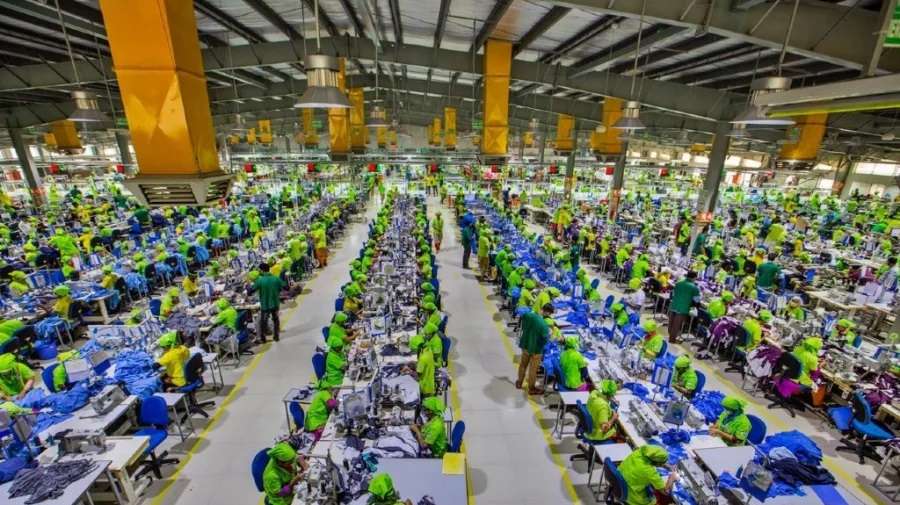In order to deal with the possible crisis brought by the fourth Industrial Revolution, Vietnamese firms proactively conduct training sessions in order to improve their human resources’ capacity.
Incentives are being given to encourage firms to invest in technological advances. Workers’ welfare is also of focus to boost productivity sustainably. Technology in many Vietnamese firms is outdated. So labourers have little chance to use high-tech machines.
Automation makes up only 20 per cent of the production chain. This is true especially of the garment and textile industry. Firms are coming up with measures to help labourers access the trend of Industrial Revolution 4.0.
The productivity of neighboring countries like Laos and Cambodia has exceeded that of Vietnam. In fact Vietnam’s productivity is only one tenth compared to Singapore’s.
Successfully addressing issues regarding the labor force may provide Vietnam a key to open the door to the world amid the fast-paced industrial revolution.
Vietnam has a target of 35 billion dollars in total textile and garment export value for this year. Enterprises have been asked to fully exploit the working capacity of their workers as well as restructure their management practices to improve labor productivity.
Besides maintaining and developing export markets, enterprises are focusing on developing new markets, including linkages with the distribution system in the local market.
Vietnam upgrades worker skills to combat Industry 4.0
- 1
- 2
- 3
- 4
- 5
- 6
- 7
- 8
- 9
- 10
EU's T-shirt market: Steady consumption, rising imports shows changing dynamics
The European Union's appetite for T-shirts remains robust, with consumption expected to grow steadily over the next decade, albeit at... Read more
China's neo-luxury era redefines consumer aspirations
As China's affluent consumers mature, a there is a shift in the luxury market. The days of conspicuous consumption and... Read more
Next Big Opportunity for Indian Textile &Apparel: Strategic focus on key pro…
A compelling analysis by Sanjay K Jain, Chairman of the ICC National Textile Committee at the Indian Chamber of Commerce,... Read more
Local brands challenge global titans amid evolving consumer demand in China’s sp…
China has consolidated its position as a powerhouse in the global sportswear market, driven by a growing middle class, increasing... Read more
Impact of reciprocal tariffs and how it’s reshaping global textile supply chains
The announcement of reciprocal tariffs by the US, even with the 90-day pause on those excluding China, has triggered a... Read more
Global Sourcing Expo 2025 to strengthen India-Australia textile ties
Julie Holt, Director, Global Business & Exhibition has led the expo since its inception in 2010. She is focused on... Read more
EU vs. US Garment Imports: A tale of diverging trends
The global garment industry is a complex web of production, distribution, and consumption, with shifting trends and regional disparities shaping... Read more
Techtextil India 2025 to launch 'Sporttech Pavilion' for sports and activewear t…
Messe Frankfurt and Concept N Strategies join forces Messe Frankfurt Trade Fairs India Pvt Ltd has partnered with Concept N... Read more
Luxury's China Playbook: Why Tmall remains essential despite Douyin's rise
The narrative surrounding China's luxury market has been rife with talks of a slowdown. However, a recent report by DLG... Read more
Green Thread: LEED certified RMG units boosting Bangladesh's exports
Bangladesh, renowned for its robust garment manufacturing sector, is undergoing a profound transformation towards sustainability. This evolution is underscored by... Read more












